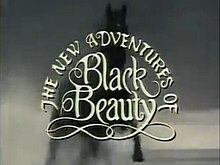Chapter 3 My Breaking In
byChapter 3 My Breaking In marks a pivotal point in Black Beauty’s young life, describing the transition from carefree colthood to trained domestic service. This process, known as “breaking in,” is not about force but gradual adaptation, and in Black Beauty’s case, it was handled with patience and kindness by his master. The first steps involve wearing a bit and bridle—strange and initially uncomfortable objects that restricted his natural movements. Despite the awkwardness, he endured the sensations out of trust for his master, whose steady hand never used pain as a teaching tool. Black Beauty notes how important it was that no harsh words or punishments accompanied these lessons, only calm repetition and encouragement. It’s through this method that he first begins to understand human expectations and how to respond gently and obediently.
As his training progresses, Black Beauty is introduced to saddles, harnesses, and eventually metal horseshoes, which bring new physical adjustments. The shoes feel odd at first—heavy and cold—but they protect his hooves on hard roads, and he soon grows used to them. What’s most striking in this phase is how each lesson is given time to sink in before the next challenge is introduced, ensuring that fear is replaced by familiarity. His master allows him to walk with the saddle before adding a rider, and only when Black Beauty moves with confidence does he experience pulling a small cart. These steps build trust and a foundation of cooperation rather than resistance. The gradual exposure to each part of his working life reflects the master’s understanding of a horse’s needs, creating a bond based on mutual respect rather than dominance.
One of the most vivid parts of the chapter is Black Beauty’s encounter with trains. Initially, the thundering sound and flashing motion of locomotives terrify him. Yet his master deliberately leads him near the tracks multiple times, always calmly and without pressure, allowing Black Beauty to observe and adjust at his own pace. The turning point comes when he notices how cows and sheep remain unfazed by the noise, which makes him reconsider his reaction. Soon, the sight of a train becomes just another feature of the landscape, not a source of fear. This part of his training demonstrates how animals can adapt remarkably well when their fears are met with patience rather than punishment. It also reinforces the idea that trust and repetition are the best tools in helping animals feel safe in a human world.
The chapter also delves into deeper themes beyond training mechanics. Black Beauty reflects on the reality that not all horses are as fortunate to have kind handlers. He remembers his mother’s advice, warning that although they may serve good people now, the future might place them in the hands of the cruel or ignorant. Her words—that behaving with dignity and strength is the only defense in a life governed by humans—stay with him. Black Beauty’s awareness that his fate depends entirely on the character of his owner introduces a sobering truth about domesticated animals. It reinforces the novel’s central message: that the treatment of animals is a direct reflection of human morality and awareness.
Moreover, this chapter subtly critiques the broader system in which horses are broken in. While Black Beauty’s experience is gentle, it’s made clear that many other young horses are subjected to fear, force, and pain. The author does not need to describe cruelty in graphic terms; the contrast with Black Beauty’s experience is enough. By showing how effective kindness and consistency are, Anna Sewell quietly undermines the justification for harsh training methods. She elevates empathy as both morally superior and practically effective, appealing to readers’ conscience and common sense alike.
Ultimately, Chapter 3 illustrates how early handling shapes a horse’s future behavior, trust in humans, and even emotional health. Black Beauty’s good beginning sets him on a path to become a reliable and responsive companion, highlighting the potential in every animal when nurtured with care. His reflections, though simple, carry profound insights into how animals perceive their world and the people who shape it. It’s not just about teaching a horse to pull a cart or wear a bridle—it’s about earning that animal’s trust and ensuring its dignity remains intact through every stage of training.

